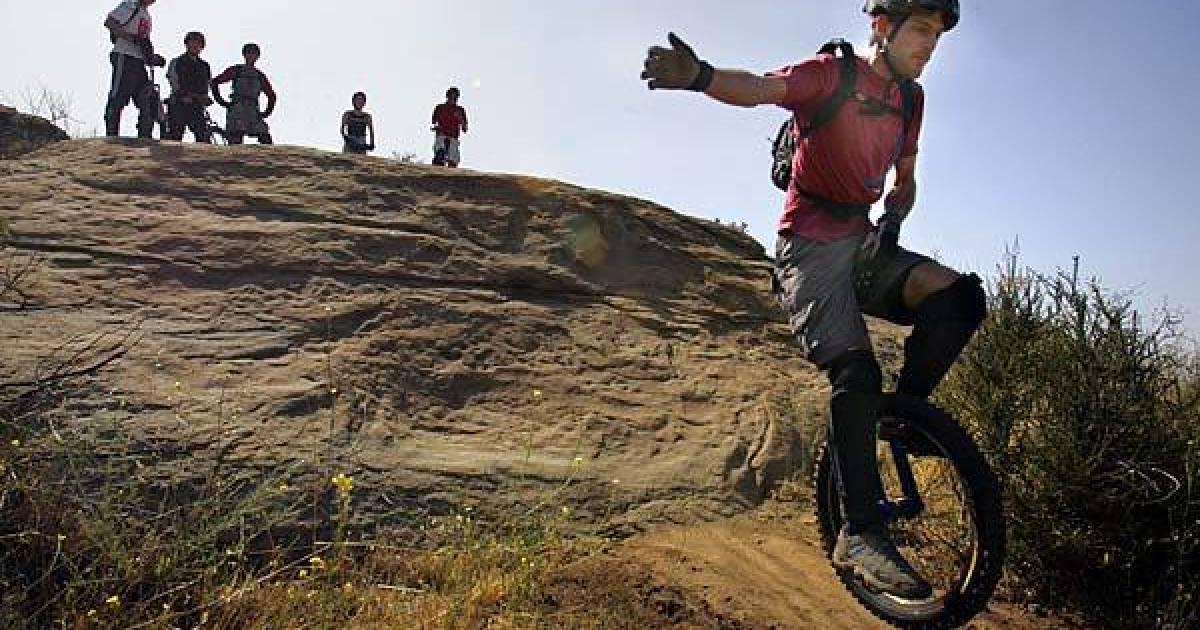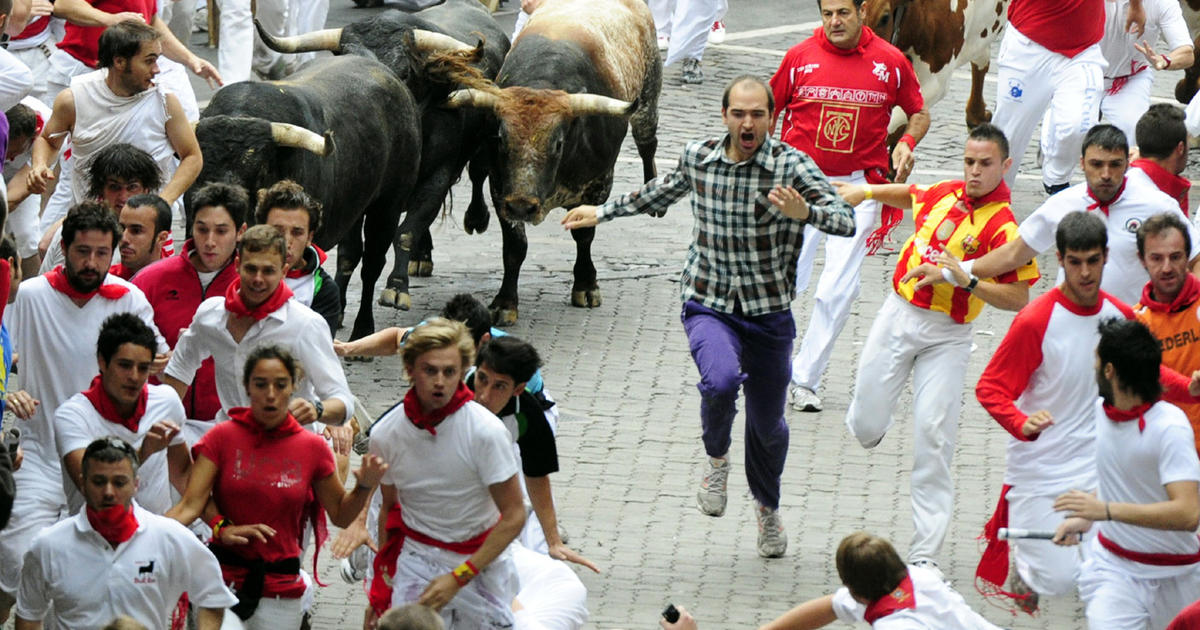15 Extreme Sports You Would Have To Be Insane To Try
If yoga does not do it for you and you need a sport with more adrenaline-pumping thrills, there are several extreme sports gaining popularity. Some are relatively safe when the correct safety precautions are taken, while others are so insane they are being banned worldwide. Extreme sports take the usual activity to the next level, whether on land, in the water, or the air, and are guaranteed to get your heart pumping. After trying any of these, you might need a little yoga.
15. MOUNTAIN UNICYCLING

Mountain biking is a popular sport for beginner and advanced riders, but unicycling on a mountain is not for everyone. It is done at a slower pace than mountain biking because of the terrain and lack of gears. The lower speed is one reason many proponents maintain it is a safer sport than mountain biking. Off-road unicycles usually differ from other riding styles and are affixed with stronger frames, knobby tires for grip, solid hubs to take the pressure, and pedals with additional grip.
14. BASE JUMPING

Considered one of the most extreme sports, BASE jumping involves jumping from one object to another, using a parachute or wingsuit. The four fixed objects create the acronym; B.A.S.E. stands for Building, Antenna, Span, Earth. BASE jumping began in the 1970s and has grown considerably, drawing hundreds of athletes and tens of thousands of spectators to the annual Bridge Day at the New River Gorge Bridge. Besides their lives, extreme jumpers also risk facing fines when attempting jumps on private property.
13. FREESTYLE MOTOCROSS

Freestyle is an extreme version of motocross, involving jumps, stunts, and even getting off the seat to perform poses while the bike is in the air. Bikes are modified versions of those used in standard motocross. Jumps are performed in a space up to 150 feet and simultaneously include tricks like the Kiss of Death, No Footer, and Dead Body. Rider Travis Pastrana was the first competitor to stick a double backflip at the X Games in Los Angeles on August 4, 2006.
12. ICE CLIMBING

Ice climbers reach mountain peaks by climbing slabs of thick ice to the summit. By going in pairs or groups, climbers can utilize a leader to provide protection and belays to his followers. Ice climbers carry a supply of personal items and technical climbing equipment, like crampons, a helmet, and an ice ax to ensure safety. Many resorts offer lessons and courses, making it a fast-growing sport. Ice grading is ranked by level, beginning the easiest WI2 to the rare, “near-mythical” WI17.
11. CREEKING

Described as one of the most dangerous sports, paddlers use specific canoes and kayaks to traverse down steep and low whitewater rapids. Along the way, the route may include waterfalls, eddies, and vertical drops. The risk of injury and death are high because of the unique threats, including getting sucked and pinned underwater by a sieve, landing poorly, or crashing from a drop, and encountering violent holes. It is typically a seasonal sport and dependent on specific water conditions.
10. EXTREME DINGHY RACING

Popular in Australia, dinghy racing requires a boat, a high-speed motor, some safety gear, and a desire for a rush. The boat is a ten-foot aluminum, and the motor ranges from ten to thirty horsepower. The navigator and driver must work together. Otherwise, the greatest dangers can occur. One driver in his first year hit a wave the wrong way, threw his boat off, and consequently hit a tree. If a boat flips, racers risk landing in the crocodile-infested water. The largest event in Riverland, Australia, has spectators lining the 100-kilometer course and brings the community together.
9. WING WALKING

Walking along the top wing of a biplane as performance has been taking place since the 1920s, daredevils performed stunts at airshows. Some people did not limit themselves to walking but went further with headstands and transferring themselves from one plane to another. These days, sport is reported to be relatively safe because the aerialists are secured to the wing while the pilot roars through the sky at 135 miles per hour, often complete with showy maneuvers.
8. VOLCANO BOARDING

With a rope in front for stability, Wooden boards are used to slide adventure seekers down the slope of volcanoes in this extreme sport. It requires climbing to the top, but the reward is in the adrenaline rush on the way down. Participants sit or stand on the board and travel at speeds up to thirty miles per hour. The most popular location is Cerro Negro, an active volcano in Nicaragua, where guides are available for tourists.
7. WINGSUIT FLYING

Wingsuit flyers soar through the air and fly like birds. By either jumping out of a plane or off a high cliff or other fixed object, flyers descend at speeds of 120 miles per hour, and at this rate, can perform acrobatic stunts. A wingsuit adds air-filled surface space along the whole body, making this feat possible. It is similar to hang gliding and skydiving, but the main difference is the jumper’s use of a parachute to land.
6. TRAIN SURFING

The popularity of riding on the top of a moving train started in Germany in the 1990s when youth were attracted to the thrill of hitching a free ride. The popularity waned until 2005, when people began posting themselves doing the stunt on social media. The goal for many enthusiasts is to see how much risk they can handle, like traveling one-handed and traversing between carriages. The dangers train surfing poses has made it an illegal extreme sport in many countries, including the United States.
5. BULL RUNNING

Bull running has participants run as quickly as possible down an open street to avoid being down by a group of cattle following behind. The most popular, the festival of San Fermin in Pamplona, Spain, was named after Saint Fermin, who is believed to have died by being dragged by an angry bull. At the end of this half-mile route, participants finish at a bullfighting ring. Fifteen deaths have been recorded since 1924, and there have been countless injuries in the Spanish event. The manic atmosphere also often results in pile-ups of runners.
4. SHOCKFIGHTING

Being zapped by a bolt of electricity is not everyone’s definition of sport, but for fans of this version of mixed martial arts, the pain is worth the effort. Created by the martial artist Michael Alexander, electric shocks are emitted onto opponents each time their hands meet at a punch. The tasers emit three million volts and are placed inside the fighter’s gloves. Alexander said it is so extreme, and the “winner takes all,” but the sport is also illegal in most countries.
3. POWERBOCKING

Parkour is the art of free running, tumbling, and jumping to get oneself between two spots with the greatest speed and efficiency. It is based on military training and takes from a variety of moves and means of traversing over obstacles. By adding oversized springs to the bottom of their feet, extremists invented parkour with a twist. The huge springs increase every move, including the height and distance of jumps, as well as chances of injury.
2. KITEWING

A kitewing allows extreme athletes to combine air sports with surface sports. It matches hang gliding with surfing, snowboarding, and skiing by having users hang onto the kite's handle while jumping from the sky. Attached to their feet are skis, a snowboard, or a surfboard, so when they land at high speeds, they are ready to transfer to the surface sport while still using the kite to provide an extra boost.
1. AIR KICKING

Located at commercial swimming venues and foam pits, the AirKick is a launch that catapults users air bound about twenty-six feet. The mechanism works by using hydraulic technology and air pressure. About sixty liters of water gives the AirKick the ability to provide users with extreme lift-off from the seat. It remains relatively safe in comparison to other extreme sports since it is the product of a manufacturer.








